Number Sense Teaching Resources
Browse printable number sense worksheets, hands-on maths activities and more teacher resources created by teachers for teachers like you!
These resources are aligned with the Australian Maths Curriculum, and each was created by teachers with teachers — and students — in mind to help build foundational maths skills in ways that engage and excite students about numbers!
Want to learn more about number sense? Read on for a primer from our teacher team, including a definition of number sense, how to assess this important maths skill and more!
What Is Number Sense?
In the most basic sense (no pun intended), number sense refers to a student's intuitive understanding of numbers and their relationships. It includes the ability to estimate and compare quantities, understand numerical patterns and relationships and make reasonable judgments about the accuracy of calculations.
When students show an understanding of numbers, their size, relationships,and how they are affected by the four mathematical operations, what they're really showing is their number sense.
In an educational setting, building number sense is closely related to other foundational skills such as problem-solving, critical thinking and logical reasoning. As our students get older, it will become a crucial skill for daily life they will use to manage finances, calculate time and make decisions based on numerical information.
Teach Starter Teacher Tip: Although the names may seem interchangeable, it's worth noting that number sense is not the same as mathematical fluency or memorisation of algorithms, but rather a deep understanding of the underlying concepts and relationships between numbers.
When Does Number Sense Develop?
There is no single year level when we're teaching students number sense — instead, it continues to develop and become more sophisticated as students progress through primary school.
Research suggests that babies as young as 6 months old can distinguish between small and large numbers of objects, and by prep, students are already working on number sense as they begin to learn counting and one-to-one correspondence. At this level, they're also beginning to develop an understanding of quantity and relative size — both key to overall number sense.
Number sense will continue to grow in primary school as students become more adept at recognising and using numbers to solve problems, and it continues into high school and — for many students — into university.
Assessing Number Sense
When we assess students for their number sense skills, there are certain mathematical concepts that they should have under their belts. These include:
- Ability to Recognise Missing Numbers in a Pattern —When kids can fill in missing numbers in a sequence, they're showing that they can make connections between numbers and develop an understanding of the relationships between them.
- Ability to Use Maths Mentals — Students with number sense can use maths mentals to solve problems involving the four basic operations.
- Ability to Engage in Systematic Counting — Children who can count systematically can more easily understand the relationships between numbers, including number magnitude, patterns and sequences.
- Ability to Subitise Numbers — Students can use visual clustering skills to instantly recognise how many objects are in a group without physically counting them.
- Ability to Relate Numbers to Real-World Problems —For example, a student may understand that '3' means 'three objects' or 'three days' or 'three dollars.'
- Ability to Compose and Decompose Numbers — Students use number sense when they break down numbers and put them back together. For example, a student who can break down the number 10 into 8 and 2, then add the two back together to again make 10, is using number sense.
- Plus Plan
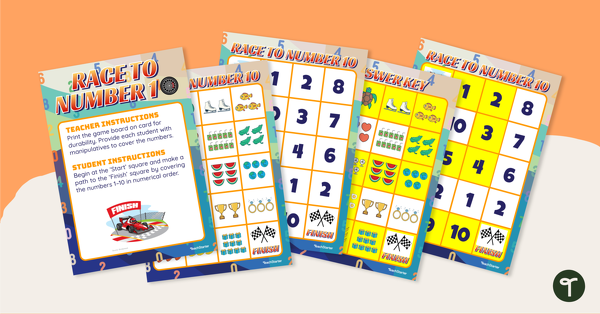
Race to Number 10
Practise counting and sequencing objects up to 10 with this hands-on or interactive game.
- Plus Plan
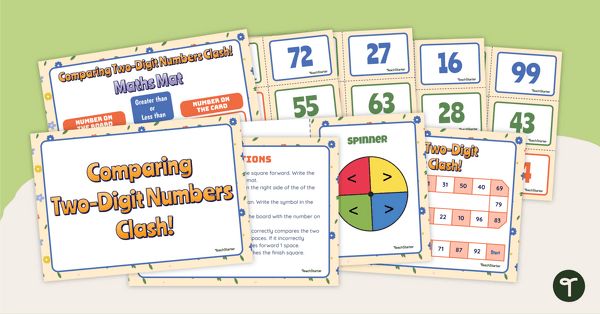
Comparing Two Digit Numbers — Clash Game for Year 1
Practise comparing two-digit numbers with the help of this year 1 board game.
- Plus Plan
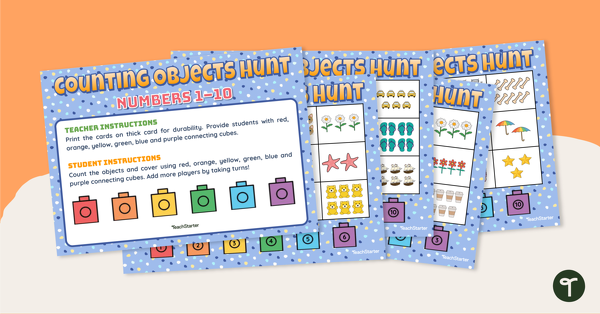
Counting Objects Hunt – Numbers 1–10
Use one-to-one correspondence skills to practise counting objects up to 10.
- Plus Plan
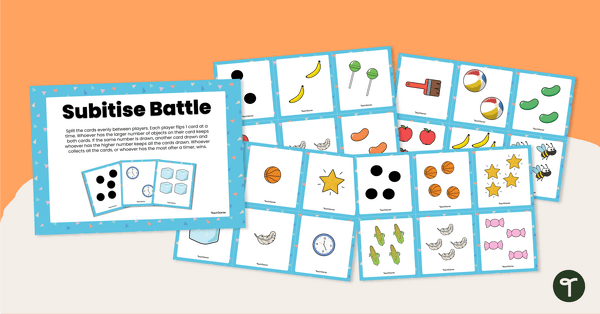
Subitise Battle – Card Game
Quickly subitise and compare with this fast-paced card game.
- Plus Plan
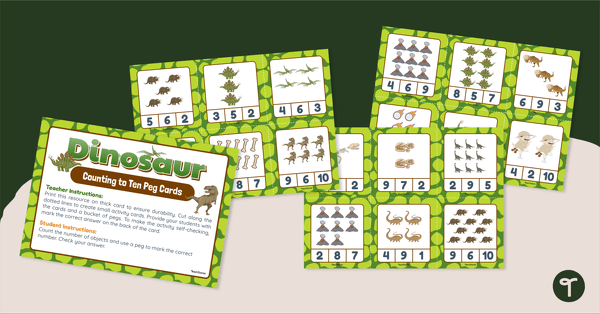
Counting Peg Cards – Dinosaurs
Practice counting objects with a set of 18 dinosaur-themed counting peg cards.
- Plus Plan
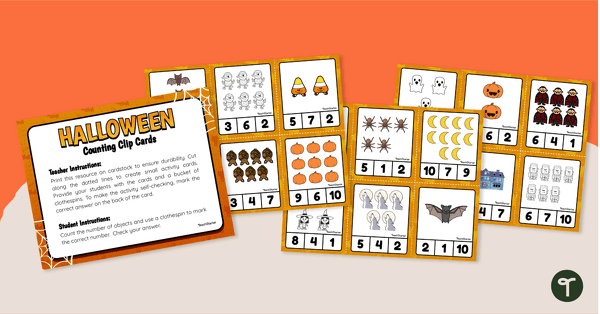
Counting Peg Cards - Halloween
Practise counting objects with a set of 18 Halloween peg cards.
- Plus Plan
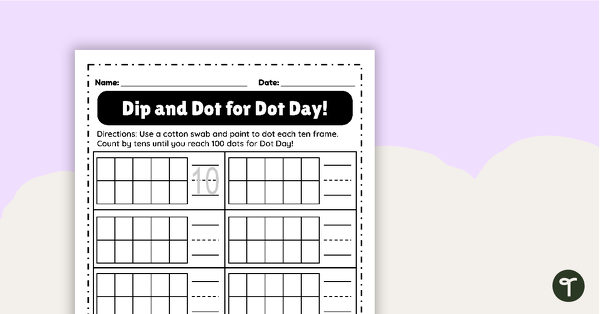
Counting to 100 - Dot Day Worksheet
Celebrate International Dot Day with this fun, hands-on way to practise counting to 100.
- Plus Plan
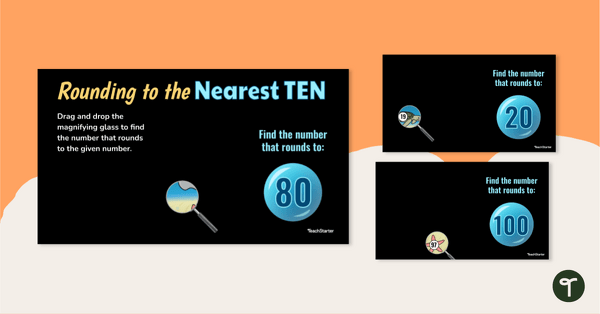
Rounding to the Nearest Ten - Interactive Activity
Practise rounding two-digit numbers to the nearest ten with this interactive Google Slides activity.
- Plus Plan
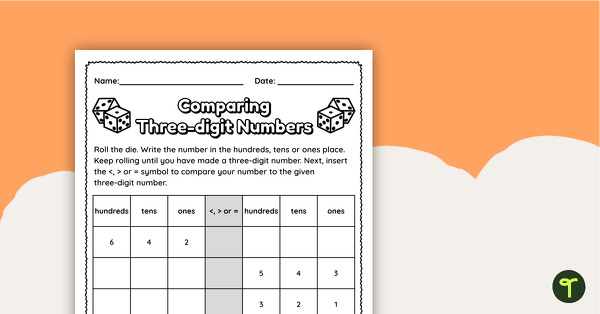
Comparing Three-digit Numbers – Worksheet
Practise comparing three-digit numbers with this hands-on worksheet.
- Plus Plan
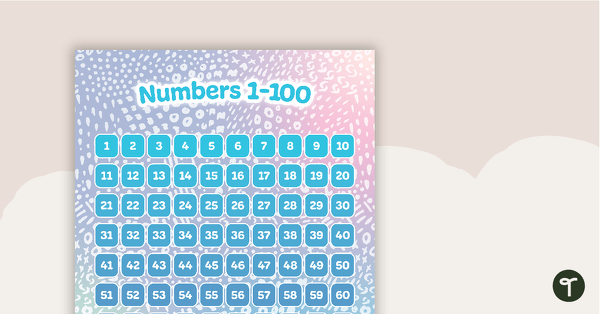
Pastel Dreams – Numbers 1 to 100 Chart
Pastel Dreams themed hundreds board.
- Plus Plan
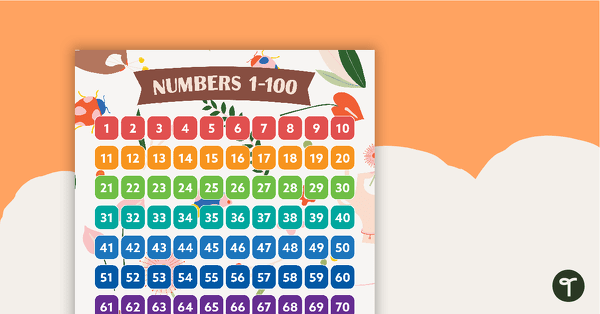
Colourful Insects – Numbers 1 to 100 Chart
Colourful Insects themed hundreds board.
- Plus Plan

Number Talks - Place Value Task Cards
Build number sense skills with this set of 32 place value task cards.
- Plus Plan
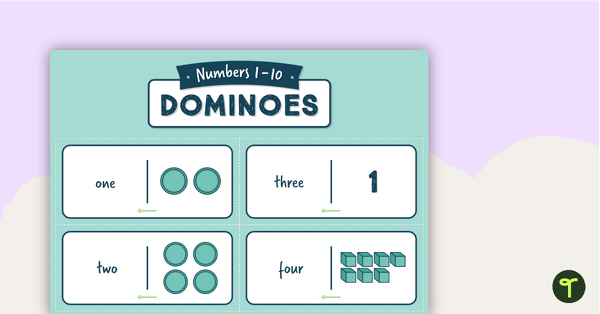
Numbers 1–10 Dominoes
A set of dominoes to consolidate students’ understanding of number from 1–10.
- Plus Plan
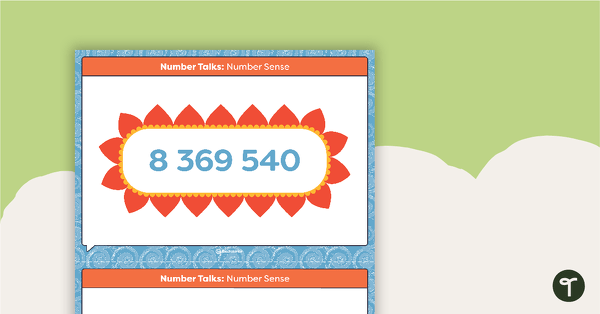
Number Talks - Number Sense Task Cards
Build number sense skills with this set of 24 task cards.
- Plus Plan
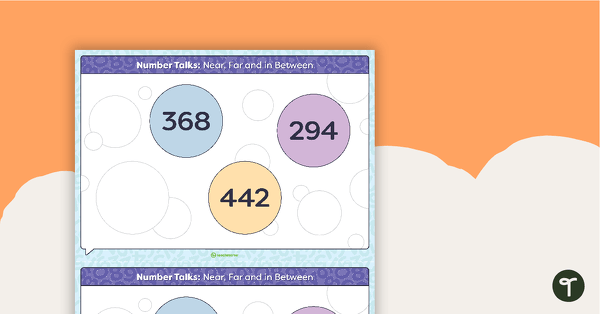
Number Talks - Near, Far, and in Between Task Cards
Build number sense skills with this set of 24 task cards.
- Plus Plan
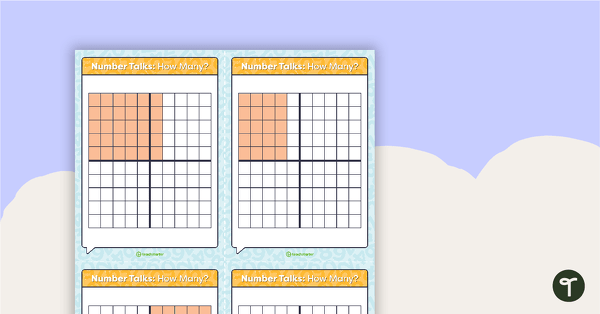
Number Talks - How Many Task Cards
Build number sense skills with this set of 24 task cards.
- Plus Plan
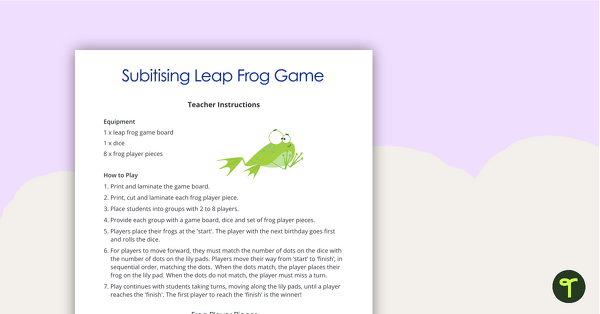
Subitising Leap Frog Game
A fun game for students to play during numeracy rotations when learning to subitise numbers from 1 to 6.
- Plus Plan
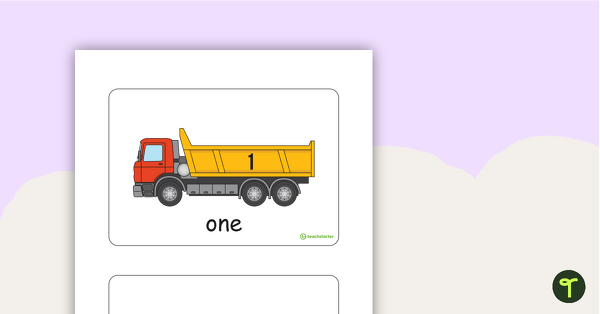
1 to 20 Dump Truck Number Cards
A set of dump truck themed number cards to use in the classroom when counting from 1 to 20.
- Plus Plan
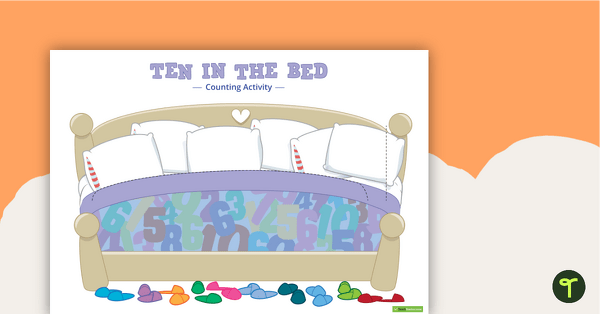
Ten in the Bed - Counting Activity
A fun hands-on 'Ten in the Bed' number rhyme activity to help students sequence numbers and count backwards from 10.
- Plus Plan
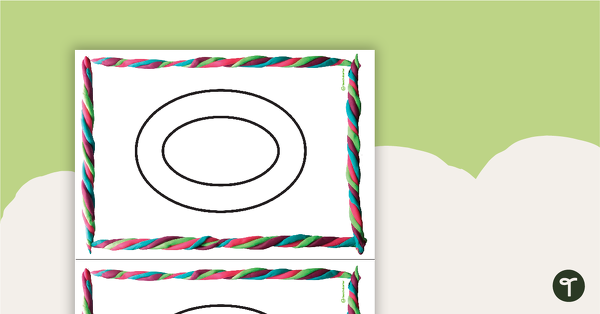
Numbers 0 to 20 - Playdough Mats for Fine Motor Development
A set of number playdough mats to help children develop their fine motor skills and identify the numbers from 0 to 20.
- Plus Plan
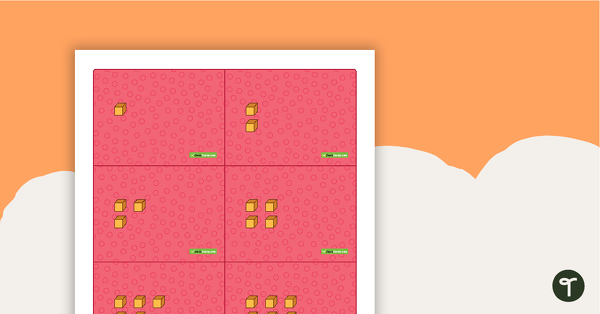
1 to 20 Number Match-Up Cards (MAB, Quantities, Digits, Tallies, Tens Frames and Words)
A match-up activity to help students identify different representations of the numbers 1 to 20.
- Plus Plan
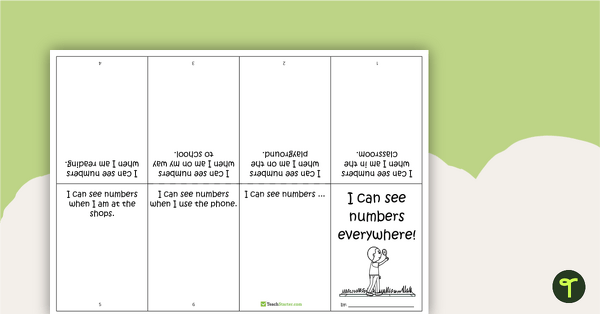
I Can See Numbers Everywhere! - Recording Numbers Booklet
A create your own booklet for students to use when identifying and recording numbers from different environments.
- Plus Plan
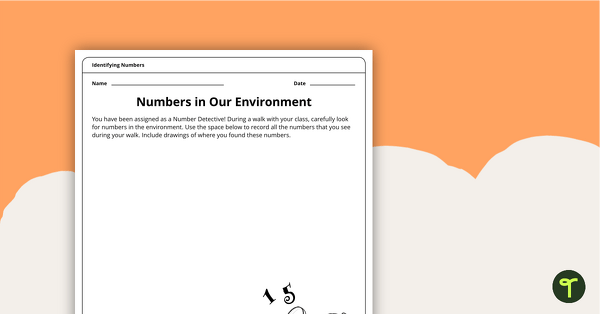
Numbers in Our Environment - Recording Worksheet
A place value worksheet for younger students to use when identifying and recording numbers in their environment.
- Plus Plan
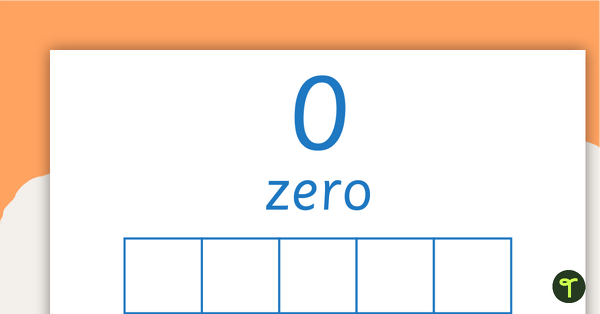
Tens Frames – 0 To 10 Platypus Theme
0 to 10 tens frames including the numerical and written form of the number, along with its tens frame representation.
- Plus Plan
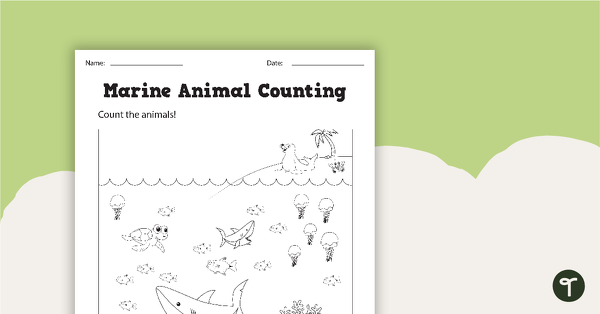
Marine Animal Counting Worksheet
A marine themed counting worksheet to use in the classroom.
- Plus Plan
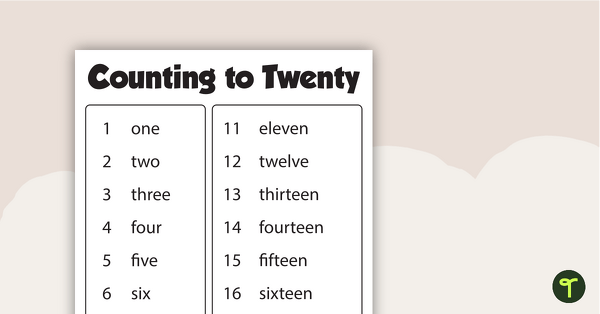
Counting to Twenty Poster - BW - No Capitals
A poster showing numbers and words from one to twenty.
- Plus Plan
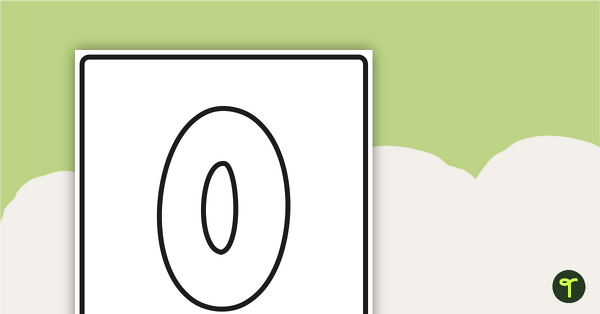
0-20 Number and Word Posters - BW
Posters showing numbers and words from 0-20.
- Plus Plan
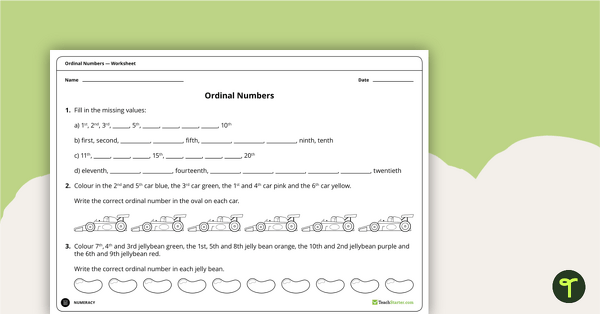
Ordinal Numbers Worksheet
A worksheet to help students consolidate their understanding of ordinal numbers.
- Plus Plan
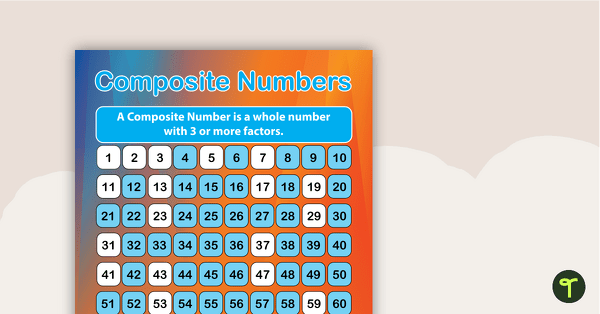
Composite Numbers - Assorted Backgrounds
Composite numbers displayed on a hundreds board.
- Plus Plan
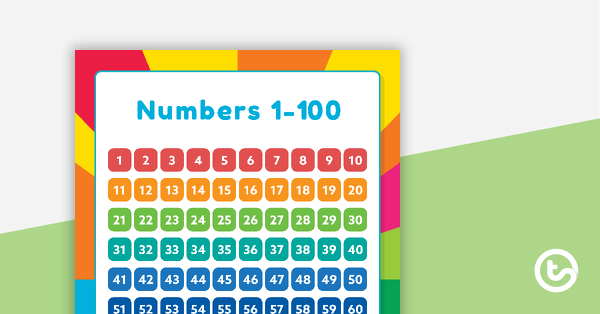
Rainbow Starburst - Numbers 1 to 100 Chart
A rainbow starbursts themed hundreds board.
- Plus Plan
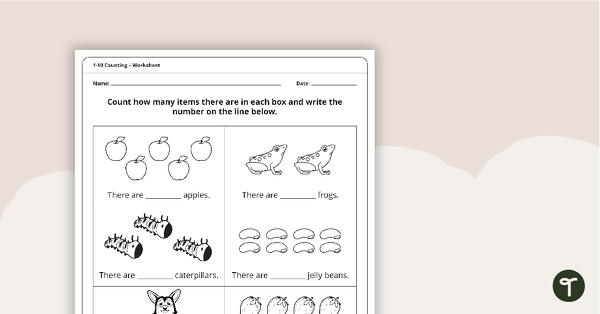
1-10 Counting Worksheet
A simple worksheet to help students with their counting skills.
- Plus Plan
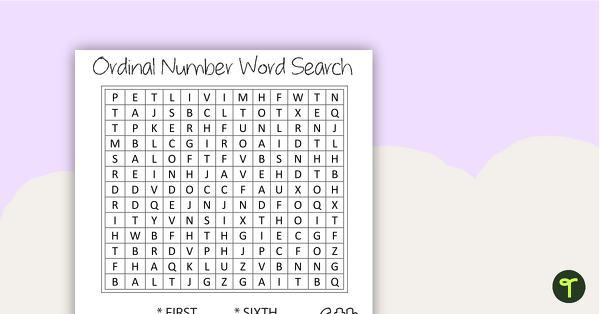
Ordinal Number Word Search with Solution
A fun word search to help your students learn ordinal numbers.